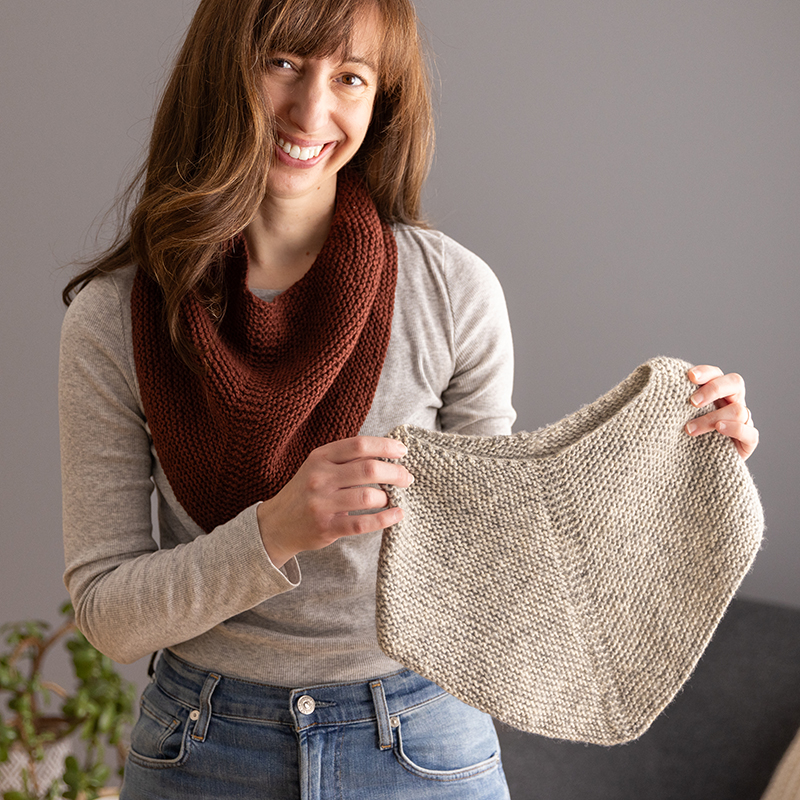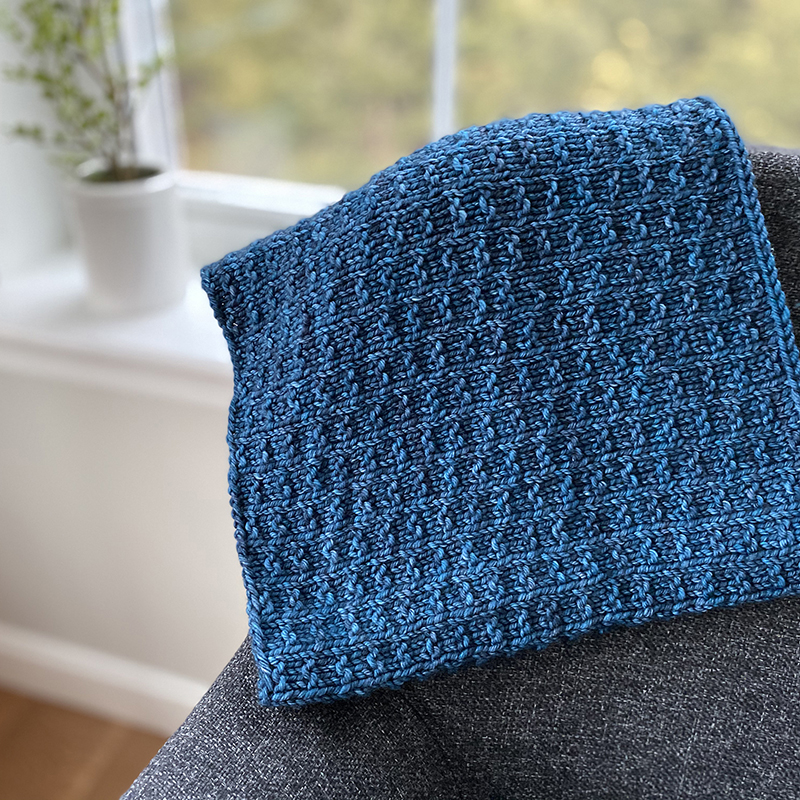Do you have a go-to “comfort knitting” project?
For me, comfort knitting is what I reach for when I want to keep my hands busy, even if my mind is elsewhere. It’s something easy, soothing and repetitive enough that I don’t have to think too hard.
In this blog post, I’m sharing a few tips about what I look for in a good comfort knitting project, along with some ideas to inspire your next one. I hope it sparks a little creativity (and calm) for you!
This past week I found myself in the family waiting area at Mass General Hospital in Boston while my husband Jeff was in surgery for a few hours. I of course had my knitting with me and had a little chat with a fellow knitter in the waiting room.
She was working on a garter stitch shawl worked in an easy 4 row repeat. And I was working on a new asymmetrical scarf I’m designing that was an easy 2 row repeat (the pattern will release this Fall – so stay tuned!).
We both talked about the characteristics of a good “comfort knitting” project – whether it’s something you turn to when in a waiting room like we were, or when you just want something that provides a relaxing, mindful experience.
What I look for in comfort knitting
Of course comfort knitting can be very subjective – some people prefer immersive, more complicated patterns as a distraction whereas others look for simplicity. For me it’s all about a combination of simplicity, repetition & just enough variation to keep my brain engaged. Here are specific things that I personally find helpful (and that I keep in mind when I’m designing a comfort knitting project):
- Simple stitch patterns, such as garter, stockinette or rib stitch.
- Easy to memorize, short repetitions
- Optional need for note-taking (you’ll know where you’re at either by counting stitches or reading your knitting).
- If you need to travel with it, something more compact.
- Yarn that feels nice in my hands and, if I’ll be in a waiting room, isn’t overly fluffy/shedding like a mohair.
Example #1: Coffee Break
One example is my Coffee Break cowl. It’s worked in garter stitch, is a 2-row repeat, and in both sections you can simply count your stitches (or measure your work) to know whether you’re done.
Coffee Break is knit with worsted-weight yarn and the pattern is available on my website or Ravelry.
Coffee Break Tip: Because this piece begins just as you would a shawl, if you’d rather just make this a simple garter stitch shawl/scarf, you can just omit sections 2 and 3 of the pattern (these are the sections where it’s joined and worked in the round. Just work section 1 and work the 2-row repeat until your desired scarf length (this would work well too if you want to use a different yarn-weight).
Example #2: Lorraine Cowl
Another example is my Lorraine cowl. It’s worked in a simple garter/rib stitch, is a 4-row repeat, and you can easily tell which row you’re on by looking at your knitting (and can simply end it when you run out of yarn or reach your desired height).
Lorraine Cowl is knit with sport or DK-weight yarn and the pattern is available on my website or Ravelry.
Example #3: Mainer Cowl
Another example is my Mainer Cowl. It features a simple 4-row stitch pattern that you can easily learn to read once established. And it’s also the kind of stitch pattern that should you make a mistake, you can hardly tell thanks to the all-over texture.
Mainer Cowl is knit with worsted-weight yarn and the pattern is available on my website or Ravelry.
I hope some of these ideas inspire you for your next comfort knitting project. Knitting can truly provide such a therapeutic benefit and I hope that no matter what type of challenges, grief or uncertainty you may be facing, that knitting can be something you can turn to, to provide even just a little bit of comfort during hard times.





